It can be frustrating not always being able to get out on the adventures you’d like with your bike. During the present crisis, as well as during the colder months, you might find yourself struggling to cycle quite as much as you’d wish, but there’s plenty you can do at home to maintain your strength and endurance. That’s why we’ve put together this guide to strength training for cyclists at home*. Read on to find out what you can do!
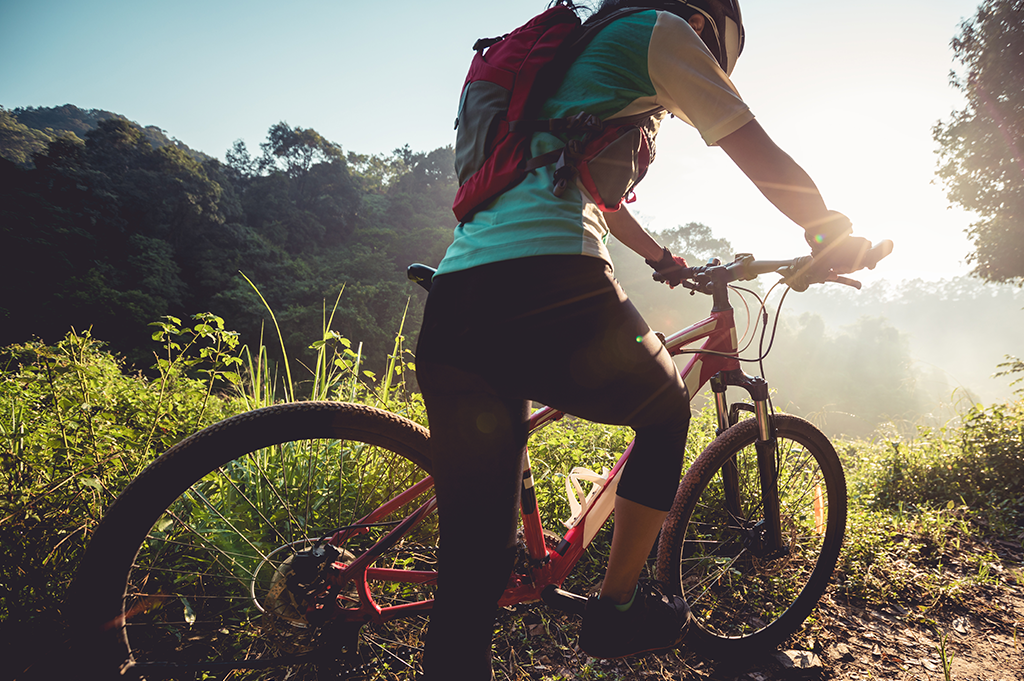
Why is strength training important for cyclists?
Cycling strength training is a really important part of staying fit and upping your game. This is true for cyclists of all ages, but especially true for mature cyclists, who might find their metabolism isn’t what it once was, with decreasing muscle mass as a result. It’s not all about building muscle, however, as weight training for cyclists can also help to improve coordination, core strength and stability, while also protecting against injury. And if you can’t make it to the gym, there are plenty of exercises for cyclists you can do from the comfort of your home.
How to strengthen your legs for cycling
It’s pretty obvious that cycling will require a lot of leg strength and endurance! Most of this can be developed through getting out on your bike, but there are certain home exercises you can perform to help give you an edge on the competition.
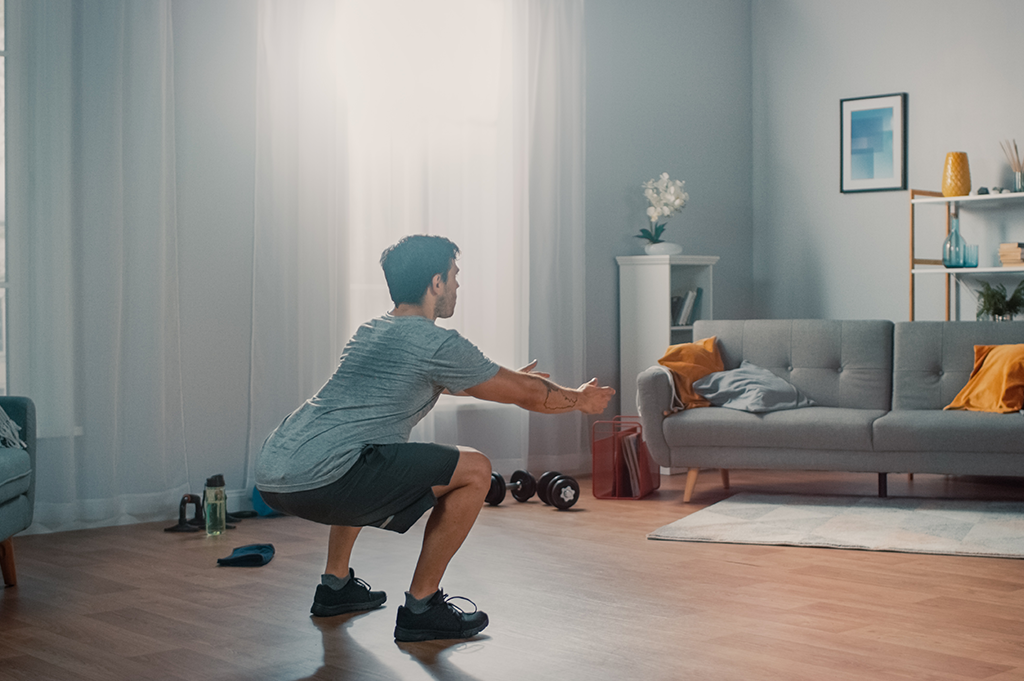
Squats
Squats are a fantastic exercise for cyclists, as they will work the quads, hamstrings, hips and knees. This can help increase your strength and flexibility, and may also help to protect your knees from wear and tear. It’s best to begin with body weight squats until you achieve the correct technique, after which you might introduce weights if you like. The correct method to squat is:
- Stand with your feet shoulder-width apart.
- Lower your body into a sitting position by bending your knees and pushing your hips back. Try not to let your knees come out further than your toes!
- Stand back up and repeat.
Lunges
Lunges should be another essential exercise on your cycling training programme. Like squats, lunges work a number of muscles, practically everything you’ll find within your lower body! It’s important to remember to maintain good posture during lunges, to help prevent injury. In order to do this, keep your shoulders back, and look straight ahead, keeping your chin up. Here’s the technique for lunges:
- Step forward with one leg, your right, for this example.
- Bend your left knee until it’s almost touching the floor (but not quite!).
- Push back up into a standing position.
- Change legs and repeat.
- Remember to push through the toes of your back leg and the heel of the leg in front.
Single leg deadlifts
Single leg deadlifts can help to develop your hamstrings, as well as the muscles in your hips. By performing the exercise using one leg at a time, it can help to correct any muscle imbalances between your two sides, making for more effective cycling. Because you’re using just one leg, it’s advisable to start with lighter weights, building them up over time.
- Stand on one leg, with your other foot lifted off the ground so that your lower leg is parallel to the floor.
- Holding a weight in each hand, bend at the hips and lower your torso toward the floor.
- Lift your upper body back up to a standing position.
- Remember to keep a straight, or only slightly flexed back, as well as to bend your knee slightly.
- Perform each rep with a slow and steady movement.
Glute exercises for cyclists
Many people might not be aware of just how important the glutes can be in cycling. Aside from contributing to the power of your ride, they also help you to stand, sit and climb. They can also help to stabilise your back and prevent pain in that area. The good news is that there are some very simple exercises you can do to strengthen this area!
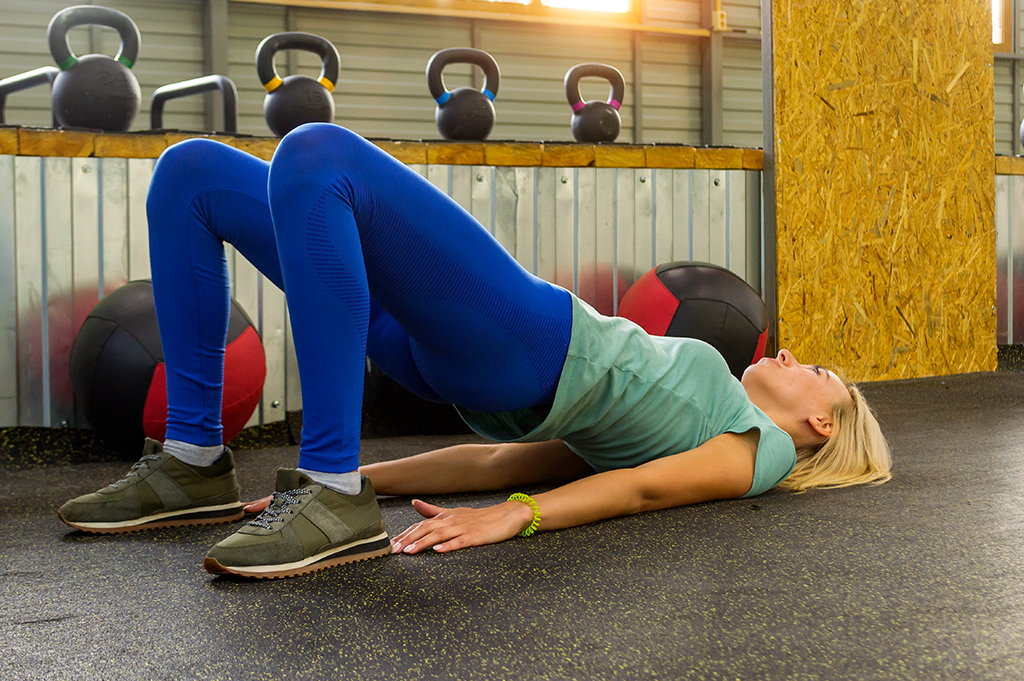
Glute bridges
A great way to not only strengthen your glutes and abs, glute bridges can also help to stretch out your hip flexors and ease lower back pain. Another bit of good news is that they’re really simple and easy to achieve:
- Lie on your back with your knees bent and your heels as far in towards you as possible.
- Driving through your heels, push your hips up towards the ceiling.
- Hold this position for a second, or a few, before lowering yourself gently to the ground.
- Try keeping your toes off the floor for this exercise. This will ensure you’re working your glutes instead of getting your leg muscles to do the work!
Kettlebell swings
Kettlebell swings have the advantage of targeting your glutes, as well as helping to develop endurance and strength overall. When you’re starting out, make sure to select a weight you’re comfortable with. Don’t pick a heavier weight for the sake of it, you’ll just run the risk of injuring yourself before you’ve developed the correct technique.
- Stand with your feet hip-width apart and your knees slightly bent.
- Holding the kettlebell with both hands, swing it up to chest height.
- Control the weight as it comes back down, hinging at the hips so that it comes to rest between your legs.
- Remember this isn’t a squat. It can be easy to come down into a squat as the kettlebell descends. Instead, work on powering the movement through your hips and glutes rather than the legs.
Important exercises for cyclists to improve core strength
Core strength is something that has seemed to be in vogue for sports of all kinds for quite some time now – and with good reason! Building a stronger core will enable you to push more of that strength out through your legs while cycling. It will also help you to maintain posture, sit comfortably in the saddle and help to prevent injury. Here are a couple of simple ways to build core strength for cyclists.
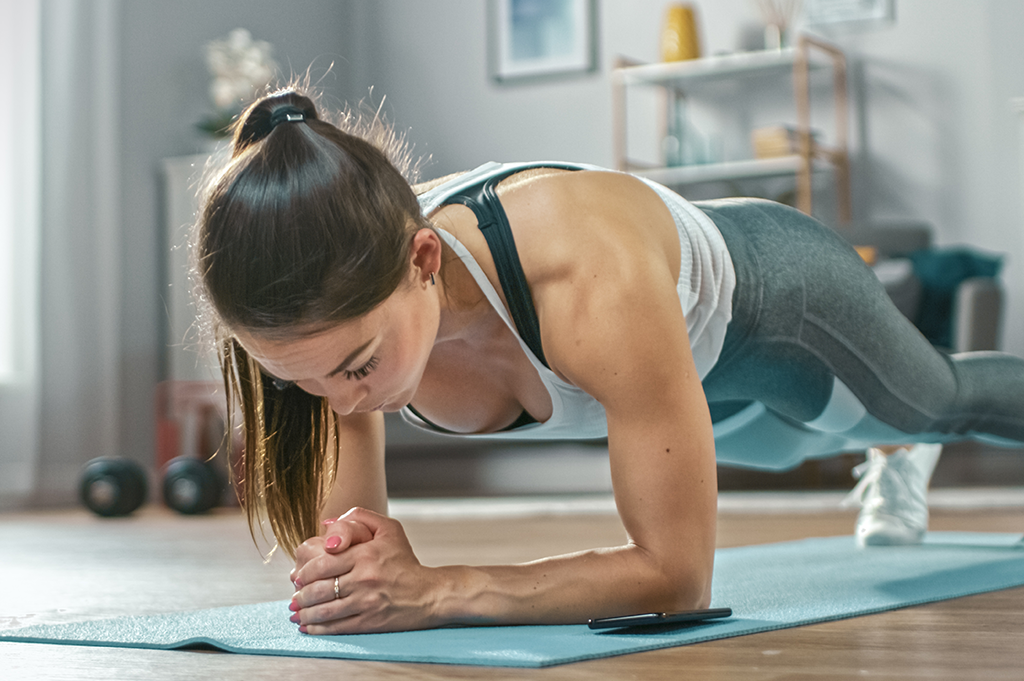
Plank
A plank looks, and is, simple, but is much harder to maintain than it looks! Not only can you perform them pretty much anywhere and at any time, it will also work your abs, back and shoulders. Here’s how to achieve the perfect plank:
- With your elbows directly below your shoulders, rest your forearms on the floor, with your feet together and legs straight behind you.
- Push your hips up so that they’re straight and in-line with your back. You want to avoid pushing them up so that you’re making a triangle-shape, but you also want to engage your abs and glutes so as to prevent your back from sagging towards the ground.
- Hold this position for as long as you can. Aim for 40-60 seconds at first, increasing the time as you become stronger.
- You can increase the difficulty of the movement by lifting one leg at a time, or by pushing an object underneath you from one side to the other, trying to keep your body as still as possible.
- If you find yourself shaking, don’t worry, it’s supposed to be hard!
Russian twist
This is a great move for working your oblique muscles, or in other words, your side abdominals. Russian twists are fantastic for improving your posture and increasing flexibility while in the saddle.
- Choose a weight, but don’t go too heavy, the idea for this exercise is to be able to complete the full range of movement.
- Sit on the floor with your back straight and feet off the ground.
- Holding the weight in front of you, twist your torso, including shoulders from side to side, bringing the weight across and towards the floor with each movement.
- If you’re really struggling when you first begin, keep your feet on the ground, lifting them off when once you become more confident.
Exercises for the arms
Just because cycling primarily uses the legs, doesn’t mean you won’t want a bit of strength in your arms too. Through strengthening your arms, you’ll feel less fatigued during rides, as your arms won’t be producing as much lactic acid. It’s best to try to add strength without bulk, however, so instead of hitting the heavy weights, try out some exercises such as the ones below.
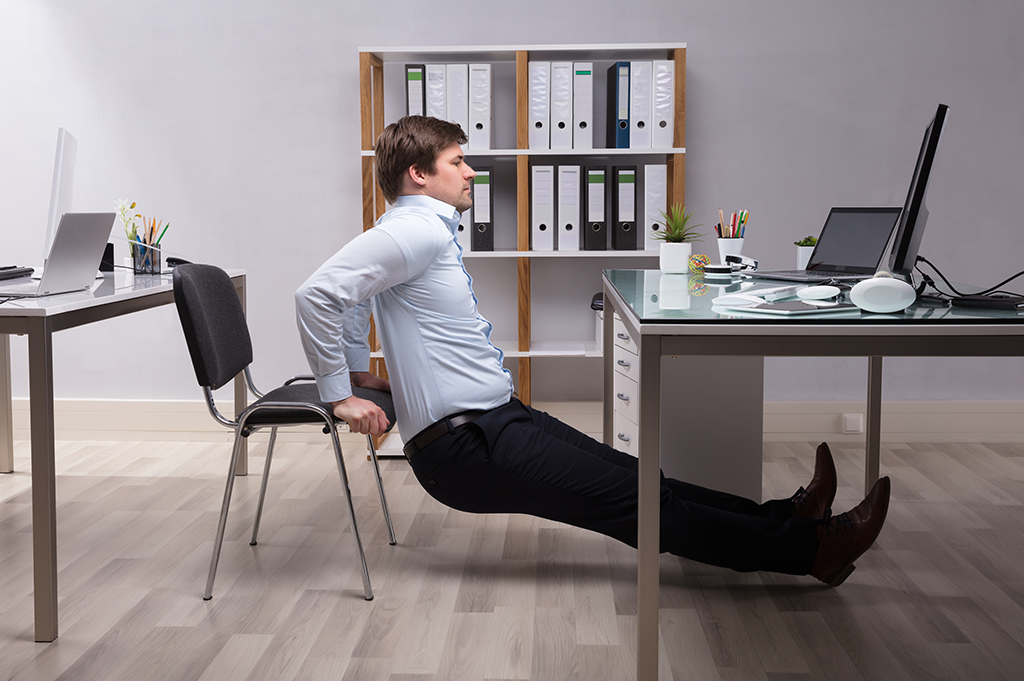
Triceps dip
Your triceps are important when cycling, as they’re the muscles that will help keep you propped up on your handlebars. If you don’t keep them strong you might find your arms becoming fatigued fairly quickly. For the perfect triceps dip:
- Sit on the edge of a solid chair or bench, sitting on your hands to make sure they’re hip-width apart.
- Slide your hips forward off the chair/bench in order to almost straighten your arms (don’t lock your elbows). Lower yourself down until your arms are bent to 90 degrees.
- Press back up to straighten your arms out, and repeat.
- You can do this either with your legs bent or straight out in front. The straighter your legs, the harder your triceps will have to work.
Renegade row
Renegade rows are a great exercise for your arm muscles, as well as those in your shoulder, core and upper back. It can also help you to transfer power from your arms to your legs while riding, moving from pulling on your bars to pedalling when climbing hills.
- Begin in a press up position, making sure to maintain a strong back, as you would for a plank (above). If you want to add weights into this exercise, rest your hands on two dumbbells.
- Bend your elbows for a press up, but then maintaining a level back at all times, pull your right hand/dumbbell up towards your right ribs.
- Return your hand back to the floor and repeat for the left side.
Exercises for general cycling strength
We’re sure you’ve gathered by now that cycling is an all-over body workout and not just about strong legs! The next two exercises will target most of the muscles mentioned above, as well as providing a bit of cardio into your workout.
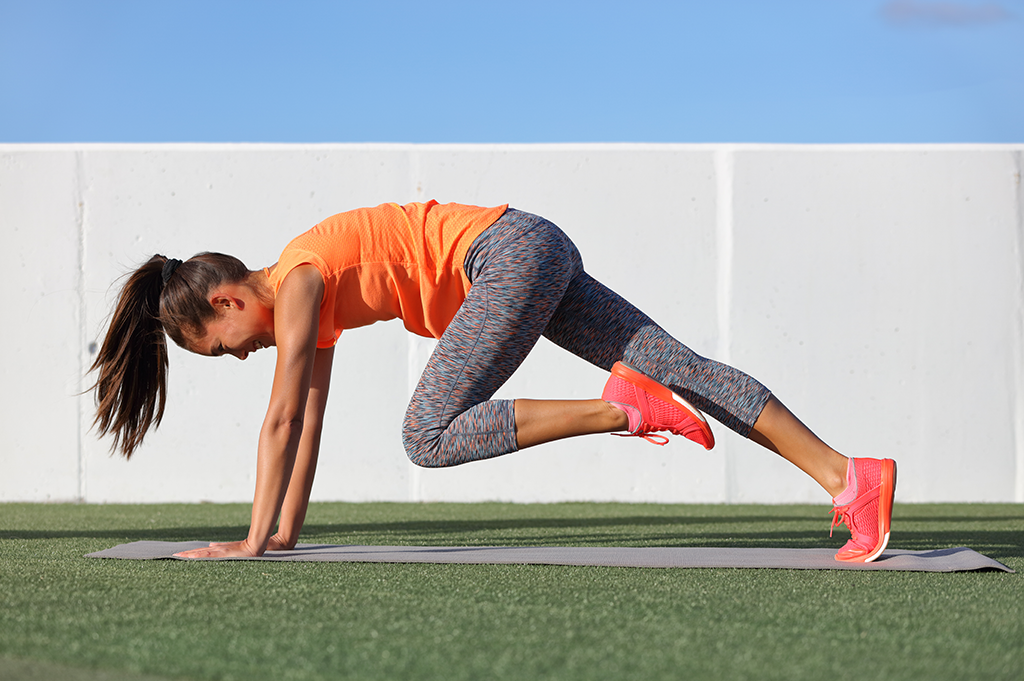
Mountain climbers
- Begin in a press up position, keeping your hips low.
- Bring your right knee in as close to your chest as possible, return, and repeat with the left side.
- As you get into the pattern of this movement, increase the speed of the exercise, to really get your heart rate up.
Burpees
Everyone’s favourite.
- Begin your burpee from a standing position.
- Squat down, placing your hands shoulder-width apart on the floor.
- Kick your legs back so you’re in a press up position, dropping your hips and chest to the floor.
- Push yourself back up to your press up position, jump your legs back in and jump yourself back up to standing.
- This is a fairly simple compound move, but trust us, after the first fifteen or so, you’ll be feeling the burn.
Hopefully we’ve managed to give you some pointers for how to work on your strength at home, so you can really raise your cycling game! Your hobbies are just as important during the COVID-19 crisis as ever, and getting out on your bike can be a great way to stay balanced during lockdown.
If you’re getting more into cycling at the moment, it might also be a good idea to consider helping to protect your bike during the current situation, as well as in the long run with cycle insurance. At The Insurance Emporium, we offer Cycle Insurance policies with cover for Theft, Accidental Loss Or Damage as standard. You can also get up to 25% discount^. Head to our product pages to find out more today!
* The Insurance Emporium always recommend consulting your GP before making changes to your physical activity.
^ The 25% discount is made up of 15% Introductory Discount plus 5% Aged Related Discount and Security Discount (if appropriate). The Introductory Discount is available for the first 12 premium payments on lunar and calendar monthly policies or one payment on annual policies.
All content provided on this blog is for informational purposes only. We make no representations as to the accuracy or completeness of any information on this site or found by following any link on this site. We will not be liable for any errors or omissions in this information nor for the availability of this information. We will not be liable for any loss, injury or damage arising from the display or use of this information. This policy is subject to change at any time.


